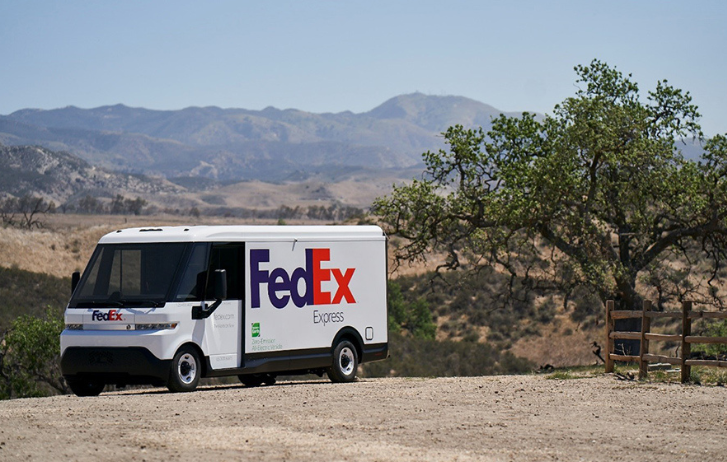
How To Green Small Business Supply Chains
By Kawal Preet | First published: June 24, 2021 Updated: November 7, 2024
Sustainability is essential for businesses of all sizes. We share how SMEs can use technology to create green supply chains and drive future growth.
- Today’s businesses are eyeing up a whole host of factors that can help them operate more sustainably.
- One important area of focus is green supply chains, and reducing emissions across an entire ecosystem of partners, vendors and suppliers.
- Technology is the most important driver when it comes to sustainability – and companies with green supply chains can get a head-start.
Customers today increasingly question the green credentials of companies, large and small. Before doing business with a particular firm or brand, consumers want to know:
Are the goods produced based on sustainable business practices? Is the supply chain green from top to bottom? Is the business meeting environmental and emissions targets?
The answer to all these questions lies in technology.
Technological transformation is now the key driver of sustainability, especially for small businesses taking advantage of tech that’s readily accessible and cost-effective. With the right digital tools and connections, SMEs can be more agile, dynamic, and responsive to growing demands for greener supply chains
And committing to sustainability as an immediate, long-term priority is a clear strategic differentiator. This is especially true across Asia Pacific.
Our region has been previously identified as lagging behind Europe and the US in making sustainability a core business agenda. This is now changing, and those who continue to invest early will stand out.
At FedEx, for example, we’re working towards an ambitious goal to achieve carbon–neutral operations globally by 2040; designating more than $2 billion of initial investment in three key areas: vehicle electrification, sustainable energy, and carbon sequestration.
So how can small businesses fully utilize technology to create growth and build sustainable business practices? And what are the benefits of green supply chain management?
There are four key innovation areas SMEs can focus on to shape green supply chains:
See-through supply chains
First, you’ll need to ensure full accountability through technology-driven, see-through supply chains. Adopting new systems quickly hasn’t always been easy for SMEs due to lack of resources, but this changed in the post-Industry 4.0 era.
AI, machine learning, the Internet of Things, sensor tracking of shipments, and higher levels of automation offer SMEs the kind of end-to-end supply chain visibility they’ve never had before.
In many cases, small businesses already have a supply-chain advantage over bigger companies, especially those in the growth and start-up phases. SMEs often react to change quicker, and don’t inherit as many legacy supplier relationships as big businesses do.
This means more control and choice when it comes to suppliers and business partners. As customers look to spend their money with responsible companies, SMEs face scrutiny on sustainability and transparency, as well as who they are partnering with.
In addition to their own sustainable supply policy and guidelines, SMEs can screen suppliers about sustainable products and services to verify and strengthen green supply chains.
Digitally-driven empowerment
Knowledge empowers, and that empowerment comes from digital investment in the small business supply chain, especially in the growing e-commerce market.
With AI and intelligent cloud databases, digital dashboards that integrate metrics, environmentally relevant data and business tools help drive maximum efficiency. Smart use of technology gives SMEs access to the fastest, most efficient and sustainable ways to reach customers.
Let’s think about delivery and the transportation of goods. Digitized delivery routes, whether using sophisticated internal route optimization software, or general route mapping apps such as Waze, vastly improve the customer experience.
Right down to the last mile, consumers not only want something delivered, they want to know how it’s delivered. In many cases, greener delivery options are preferred.
For FedEx, simply eliminating the “last mile driven” – the difference between delivering packages to multiple addresses compared to a central location – helps us avoid thousands of metric tons of CO2 emissions each year.
When it comes to tracking the carbon footprint of your business operations for ESG reporting and greening supply chains, FedEx customers have an advantage. They can access a tool called FedEx Sustainability Insights, which calculates the shipping emissions for your deliveries.
Scale up to create sustainable solutions
Green supply chains integrate a company’s business, social and environmental needs as one. Businesses can scale up solutions and invest in new ideas to improve mobility, reduce congestion, and decrease pollution in communities around the world. Often, that means forging global connections with larger logistics partners.
Going paperless, recycling and using the cloud are obvious, easy changes for SMEs to make. Switching to digital trade documents allows for smoother cross-border business and helps avoid waste.
Reassess your packaging. The right package size and design can reduce costs, maximize space, optimize loads, and minimize environmental impact.
Minimize energy consumption and reduce emissions
As governments prioritize the need for cleaner air and less toxic city environments, environmental targets for reducing emissions and energy consumption are in sharp focus too.
Around one in nine deaths per year are related to air pollution – and that ratio is far higher in the Asia Pacific region. That’s a larger health crisis than cigarette smoking. SMEs must re-think supply chains of the future as we enter an energy-constrained world. Cleaner technology will play a central role in minimizing energy consumption.
For example, SMEs can identify energy-saving alternatives in company buildings, and set more ambitious fuel efficiency and emission reduction targets. Operational improvements to routing, automation, lower emissions alternatives, alternative fuels, and electric and hybrid vehicles: all of these contribute to the sustainable supply chains of the future.
Sustainability is good for business
There is also a genuine business objective behind sustainability. The UN estimates there is $5 to $7 trillion in economic opportunities to be unlocked by achieving the Sustainable Development Goals by 2030. That’s a clear financial incentive for companies big and small to explore the possibilities that sustainability can engender.
A push to prioritize a sustainability agenda is not only good for the environment, it's essential for businesses to compete in a fast-changing world. It can attract more clients seeking sustainable goods and services, especially millennials and Gen Z, whose purchase power continues to rise.
With modern digital infrastructure, SMEs can evolve quickly. Technology allows small businesses to think big.
By thinking green and using technology to power greener supply chains, small businesses can evolve into established brands and safeguard future success.
SHARE THIS STORY
- Where Do Old Planes Go When They Retire?
- The Rise Of Intra-Asia Trade: Opportunities In The China-Southeast Asia Corridor
- How To Ship A Giant Panda
- 8 Most Unusual Shipments In The History Of FedEx
- Southeast Asia's Role In Global Manufacturing Supply Chains
- How To Make Freight Shipments Work For Your Small Business
Recommended For You

Why Gender Equity In Tech Matters More Than Ever
This International Women’s Day, we explore how technology can help level the playing field for all genders.
Read More
Women Of FedEx Challenging Bias For The Better
From frontliners to aviation security and pilots, women at FedEx are making an impact across the organization and challenging gender biases.
Read More
How To Win Gen Z Over With The Ideal Workplace
By 2025 Gen Z will represent one-third of the global workforce. Discover four key elements to help employers and companies understand what Gen Z want.
Read More




